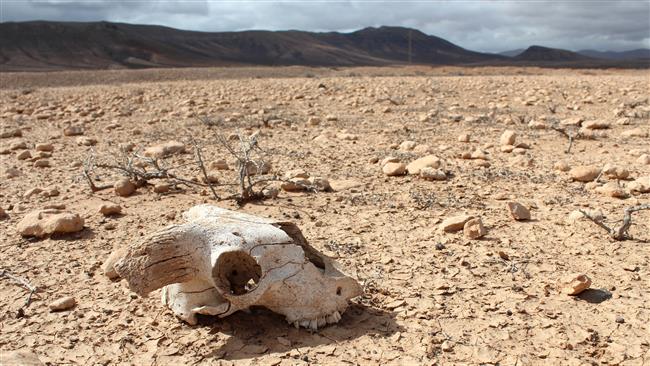Sixth extinction of animal life coming soon: Scientists
The sixth mass extinction of life on Earth is unfolding more quickly than feared, scientists have warned.
More than 30 percent of animals with a backbone -- fish, birds, amphibians, reptiles and mammals -- are declining in both range and population, according to the first comprehensive analysis of these trends.
"This is the case of a biological annihilation occurring globally," said Stanford professor Rodolfo Dirzo, co-author of a study published on Monday in the peer-reviewed US journal, Proceedings of the National Academy of Sciences (PNAS).
Around a decade ago, experts feared that a new planetary wipeout of species was looming.
Today, most agree that it is underway -- but the new study suggests that the die-out is already ratcheting up a gear.
It provides much-needed data about the threat to wildlife, mapping the dwindling ranges and populations of 27,600 species. For 177 mammals, researchers combed through data covering the period 1900 to 2015.
The mammal species that were monitored have lost at least a third of their original habitat, the researchers found.
Forty percent of them -- including rhinos, orangutans, gorillas and many big cats -- are surviving on 20 percent or less of the land they once roamed.
The loss of biodiversity has recently accelerated.
"Several species of mammals that were relatively safe one or two decades ago are now endangered," including cheetahs, lions and giraffes, the study showed.
Globally, the mass die-off -- deemed to be the sixth in the last half-billion years -- is the worst since three-quarters of life on Earth, including the non-avian dinosaurs, were wiped out 66 million years ago by a giant meteor impact.
On average, two vertebrate species disappear every year.
Tropical regions have seen the highest number of declining species. In South and Southeast Asia, large-bodied species of mammals have lost more than four-fifths of their historical ranges.
While fewer species are disappearing in temperate zones, the percentage is just as high or higher.

As many as half of the number of animals that once shared our planet are no longer here, a loss the authors described as "a massive erosion of the greatest biological diversity in the history of Earth."
There is no mystery as to why: our own ever-expanding species -- which has more than doubled in number since 1960 to 7.4 billion -- is eating, crowding and polluting its planetary co-habitants out of existence.
By comparison, there are as few as 20,000 lions left in the wild, less than 7,000 cheetahs, 500 to 1,000 giant pandas, and about 250 Sumatran rhinoceros.
The main drivers of wildlife decline are habitat loss, overconsumption, pollution, invasive species, disease, as well as poaching in the case of tigers, elephants, rhinos and other large animals prized for their body parts.
Climate change is poised to become a major threat in the coming decades, with some animals -- most famously polar bears -- already in decline due to rising temperatures and changing weather patterns.
Previous studies show that ecosystems under stress, while resilient, have a breaking point -- rapid change can lead to collapse.
(Source: AFP)
Iran FM urges Yemeni groups to unite and block Yemen’s fragmentation
Pro-Palestinian group Handala hacks phone of Netanyahu’s chief of staff, release videos
Iran launches three remote sensing satellites on Russian Soyuz rocket
How Iran’s economy adapts amid persistent pressures
Iran, China can upgrade ties to ‘outcome‑driven partnership’: Envoy
Displaced Palestinians freeze in flooded tents as Israel continues Gaza truce violations
UNSC, Arab League to hold emergency meetings on Israel’s recognition of Somaliland
EU ‘main obstacle’ to Ukraine peace: Russia FM















 This makes it easy to access the Press TV website
This makes it easy to access the Press TV website